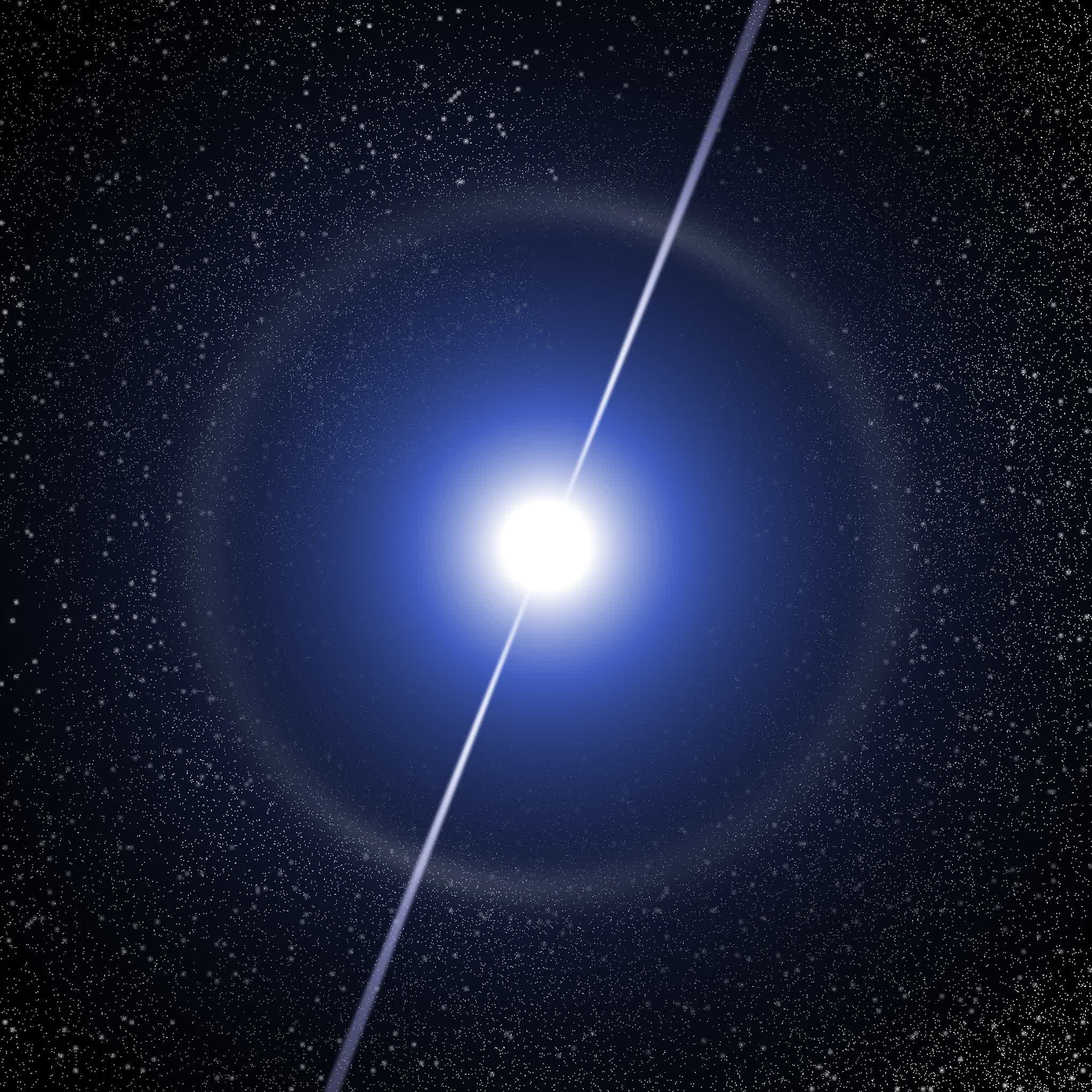WTF?! In what absolutely sounds like the start of an alien invasion movie, scientists are struggling to explain a signal that has reached Earth from space. Not only does it repeat every hour, but it also cycles through three different states.
The ASKAP radio telescope in Australia detected the ASKAP J1935+2148 signal, which has a pulsation period of 53.8 minutes.
The signal is cycling through three states: bright flashes that last between 10 and 50 seconds and have a linear polarization (all waves pointing in the same direction), weaker pulses with a circular polarization that last 370 milliseconds, and sometimes the object is inactive at the 53.8-minute mark.
"What is intriguing is how this object displays three distinct emission states, each with properties entirely dissimilar from the others," said Dr. Manisha Caleb, lead author of the study, in a statement. "The MeerKAT radio telescope in South Africa played a crucial role in distinguishing between these states. If the signals didn't arise from the same point in the sky, we would not have believed it to be the same object producing these different signals."
These active emission states have evolved over a period of eight months, suggesting there may be physical changes in the area that's producing the emission.
Before you start prepping that bunker, the signal is unlikely to have Independence Day-style alien origins. The signal is believed to be from a pulsar – a type of neutron star – one that is spinning slower than any of the 3,000+ ever measured.
"It is highly unusual to discover a neutron star candidate emitting radio pulsations in this way. The fact that the signal is repeating at such a leisurely pace is extraordinary," Caleb added.
Neutron stars are formed following a supernova – the blast that happens when large stars about 10 times the mass of the Sun use up all their fuel and explode. The stellar remnant that remains is so dense that it packs 1.4 times the mass of our Sun into a ball just 20 kilometers (12.4 miles) across, making them the second most-dense objects in the universe after black holes.
Neutron stars' powerful magnetic fields send streams of particles into space. Pulsars' rotations cause the streams to rotate, creating what appears to be a repeating signal.
The rate at which this neutron star is emitting radio light is too slow for it with current descriptions of radio neutron star behavior. Neutron stars take just seconds or even fractions of a second to fully spin on their axis, so it should be impossible for one to spin as slowly as ASKAP J1935+2148 and still send out pulses. The researchers say this provides new insights into the complex life cycles of stellar objects.
An alternative explanation is that the object is a highly magnetized white dwarf emitting coherent radio emission like a neutron-star pulsar, though radio emissions from isolated magnetic white dwarfs have never been detected before.
More research is needed to confirm whether the object is a neutron star or a white dwarf (or aliens?). "It might even prompt us to reconsider our decades-old understanding of neutron stars or white dwarfs; how they emit radio waves and what their populations are like in our Milky Way galaxy," Dr Caleb said.

